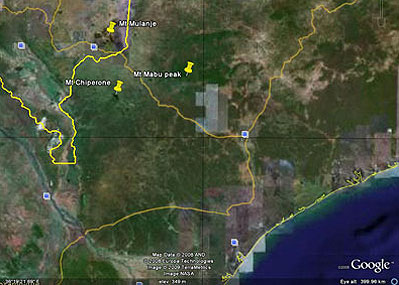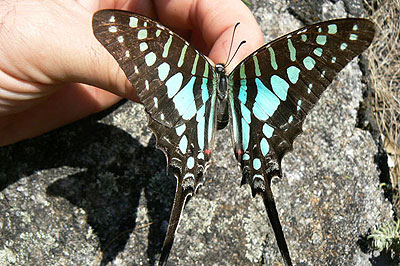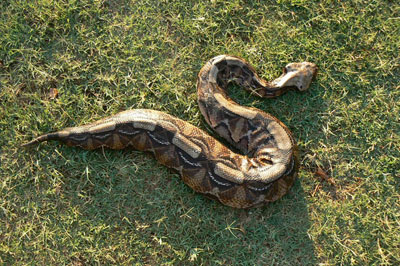Biological innovation thanks to Google Earth's
Realizing that a geographic area has not been confirmed on Google Earth maps, British scientists discovered a new biodiversity area in South Africa.
In one use of Google Earth, Julian Bayliss, a scientist working for Kew (British Royal Botanic Gardens) found there was a "streak" of colored warehouses on the map. This is a geographical area in the territory of Mozambique, with a height of 1,600m above sea level and very little rain. Immediately, Bayliss found the area "problematic."

The section does not show up on Google Earth maps
The 7,000-hectare land area, located in Mabu Mountain, northern Mozambique. The constant civil war and rugged terrain make this land still unknown to scientists. Bayliss's discovery prompted Kew scientists to make an expedition.
The project was established and involved 28 British, Mozambique, Malawi and Swiss scientists. The expedition team also hired 70 more porters on the trip.
The result of the expedition was very positive. Scientists have discovered a new area of biodiversity. Hundreds of giant snake species have been discovered, including 200 species of butterflies, elephant shrews, South African antelopes, Samango monkeys, and Viper snakes that can kill people with tiny venom . and thousands of species new plants.

A new butterfly named Graphium policenes.

The snake species Gaboon viper is also known as Bitis gabonica.
Significantly, some of the animals here are recognized as three Lepidotera butterflies, a giant snake and some other insects. "The discovery of new species is not only important for science, but also highlights the efforts in the conservation of the animal world," Jonathan Timberlake, speaking after the trip.
Currently Mabu mountain area is gradually being invaded by human activities. Every day, local residents cleared the area for planting and regularly cut trees for fuelwood.

The explorer Jonathan Timberlake is recording the expedition.
Timberlake believes that Google Earth will also help scientists discover more lands that humans have not yet arrived in in Mozambique or Papua New Guinea, which are still wild for the modern world.
- Search for simplicity in Google
- Google 'crazy' inventions
- Google launched the 3rd scientific invention competition
- 110 million USD for scientific innovation
- Special Google products and services
- Vietnam overtakes Thailand in innovation
- How does Google Maps work?
- Happy 18th birthday of Google
- 11 facts about Google
- How to see the Moon, Mars with Google Maps
- Google changed Doodle surprise rotation for birthday
- Vietnam organized the international science and technology innovation competition
 Why do potatoes have eyes?
Why do potatoes have eyes? 'Tragedy' the world's largest carnivorous life: Death becomes ... public toilet
'Tragedy' the world's largest carnivorous life: Death becomes ... public toilet Tomatoes were once considered 'poisonous' for 200 years
Tomatoes were once considered 'poisonous' for 200 years Detecting microscopic parasites on human face
Detecting microscopic parasites on human face